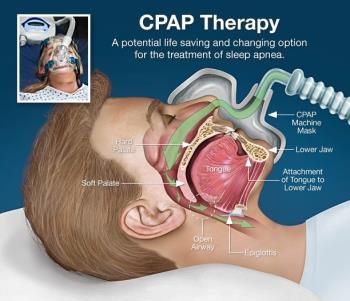
Introduction | Types of CPAP machines | More About CPAP Machines
Breathing is the key to survival. Respiration is the basis of all life in this world whether it is aerobic (with oxygen) or anaerobic (without oxygen). But we humans might be the first to have discovered the mechanism of breathing and developing devices that help us breathe if our body loses the ability to do so. CPAP or continuous positive airway pressure is a airway pressure ventilator that applies air pressure continuously to keep the airways constantly open for people who are unable to breathe on their own.

Fight Against Covid 19 - Try our newly added iHealth COVID-19 Antigen Rapid Test Kit
It stents the lungs' alveoli open and thus makes more of the lung's surface area available for ventilation. CPAP devices apply continuous positive airway pressure throughout the breathing cycle and are thus different from PEEP. Initially when the device was developed, the ventilator did not conduct cycles automatically during CPAP, no additional pressure above the level of CPAP was provided, and the breaths would have to be initiated by the patients themselves. But now we have automatically adjusting devices too.
CPAP specifically is used for people suffering from conditions such as sleep apnea. CPAP is also used in hospitals for infants whose respiratory system is not fully developed. For example, physicians can use CPAP in infants with conditions like respiratory distress syndrome. CPAP improves survival and decreases the need for steroid treatment for lungs.
toBut now technology has brought CPAP machines to your home. CPAP at home utilizes device specially designed to deliver a constant flow or pressure. A few CPAP machines have other features as well, such as heated humidifiers. CPAP is the most effective treatment for obstructive sleep apnea, in which the mild pressure from CPAP prevents the airway from collapsing or becoming blocked.
 Fixed Pressure CPAP - A fixed-pressure machine stays constantly at one pressure level all the time and delivers air at the same pressure throughout the night. Fixed pressure pumps run at a pressure that you set for your specific needs. They have a ramp function which allows this pressure to increase slowly to this level after it is put on, if the user prefers so. They are cheaper than auto-adjusting devices and are highly acceptable to many patients, particularly for average pressure requirements.
Fixed Pressure CPAP - A fixed-pressure machine stays constantly at one pressure level all the time and delivers air at the same pressure throughout the night. Fixed pressure pumps run at a pressure that you set for your specific needs. They have a ramp function which allows this pressure to increase slowly to this level after it is put on, if the user prefers so. They are cheaper than auto-adjusting devices and are highly acceptable to many patients, particularly for average pressure requirements. Auto – Adjusting CPAP – Also known as an APAP it automatically titrates, or tunes, the amount of pressure delivered to the patient to the minimum required to maintain an unobstructed airway on a breath-by-breath basis by measuring the resistance in the patient's breathing, thereby giving the patient the precise pressure required at a given moment and avoiding the compromise of fixed pressure. Auto-adjusting CPAP, these respond to subtle changes in your upper airway and provide an adequate pressure response on a breath-by-breath basis. The flexibility in pressure can make for a more natural breathing sensation when wearing CPAP.
Auto – Adjusting CPAP – Also known as an APAP it automatically titrates, or tunes, the amount of pressure delivered to the patient to the minimum required to maintain an unobstructed airway on a breath-by-breath basis by measuring the resistance in the patient's breathing, thereby giving the patient the precise pressure required at a given moment and avoiding the compromise of fixed pressure. Auto-adjusting CPAP, these respond to subtle changes in your upper airway and provide an adequate pressure response on a breath-by-breath basis. The flexibility in pressure can make for a more natural breathing sensation when wearing CPAP.
Disclaimer: All content found on our website, including images, videos, infographics and text were created solely for informational purposes. Our content should never be used for the purpose of diagnosis or treatment of any medical conditions. Content shared on our websites is not meant to be used as a substitute for advice from a certified medical professional. Reliance on the information provided on our website as a basis for patient treatment is solely at your own risk. We urge all our customers to always consult a physician or a certified medical professional before trying or using a new medical product.